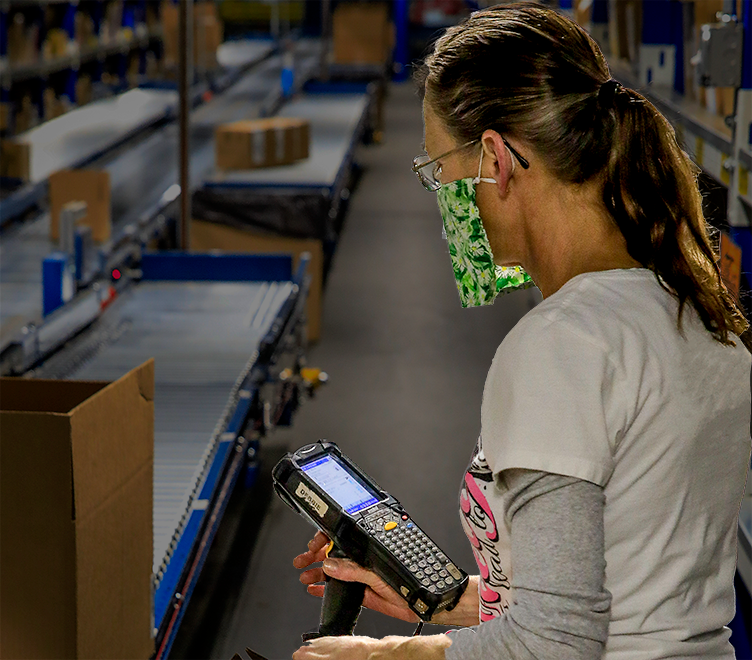With 2022 here and the holiday peak time behind us, it is a great time to evaluate your warehouse and investigate how to not only to become more productive and cost effective, but how to take you warehouse operations to the next level.
A few questions to answer about your operations first:
- Do you track inventory with spreadsheets or with forms filled out with pen or pencil?
- Are your warehouse processes well defined and known by the entire staff?
- Do you depend on one or two people on the warehouse floor that have key knowledge of inventory placement and locations? (tribal knowledge)
- Do 99% of your orders go out on time?
- Do you have 99% order accuracy?
- Do you have a lot of overtime?
- Do you know that you have enough inventory to fill orders?
- Do you have slow moving inventory taking up too much space?
If you answered yes to some or all the questions above, you’ll need to start automating your warehouse. Below is the first few steps in taking control of your operations and making your warehouse fulfillment the crown jewel of your organization instead of the quarterly target for ridicule.
Step #1
Use Automatic Identification and Data Collection (AIDC)
AIDC is the use of a scanner, camera or RFID device that can capture a bar code or identification code and automatically store or update a product’s location whether it is being put into inventory or picked for an order. The data collection then goes into a database or an enterprise resource planner (ERP). By implementing AIDC devices and linking them wirelessly or doing a hardwired data dump at the end of a shift, you can accuracy and improve productivity. This is a key first step to eliminating manually inventory tracking errors and ensuring your levels and orders are up to date.
Step #2
Integrate a Warehouse Management System (WMS)
To put it plainly the WMS is the brain of a warehouse. It is the software that automates your processes that can, in turn, make real-time decisions, using pre-defined processes to direct labor and movement on the warehouse floor. It tracks and traces all the materials and products that enter and then leaves your warehouse. A WMS has been shown to reduce costs, increase productivity and greatly improve customer service and satisfaction.
One of the biggest benefits of a WMS is the real-time data that is available to management as well as staff. Many WMS systems can provide the information as a web-based service as well alert management if there is downtime or an issue in the warehouse. For instance, the FASCOR WMS can not only provide custom reporting for management and executives, it can also show warehouse floor workers goals and orders to fulfill during their shift.
Watch the video below to see what areas a WMS can effect in a warehouse and the benefits
Below are a few things that a WMS can automate:
INBOUND ORDERS
- Inbound Shipment Putaway & Tracking
- Dock Management
- Location Management
- Cross Docking
- Barcode & Label Management
- Returns Management
INVENTORY
- Labor Utilization and Performance
- Workflow Assignment
- Task Management
- Task Interleaving
- Cycle Counting
- Inventory Reporting
OUTBOUND ORDER FULFILLMENT
- Dynamic Pick Assignments
- Advanced Picking Methodologies (Single & Multi order, Voice, Zone, Wave, Ect)
- Rules, System Based Picking (FEFO, LIFO, LEFO, Ect)
- Load Planning
- Wave Planning
- ASN/EDI integrations
Step #3
Adopt Transportation Management Software
Transportation management software or TMS automates small parcel and LTL carriers and simplifies the shipping process delivering cost savings in shipping rates and cost reductions in shipping materials used.
A TMS can ensures carrier compliance & eliminates carrier chargebacks while facilitating best and least cost selection of services through rate shopping on major parcel carries like USPS, UPS and FEDEX. Many TMS, like the FASCOR TMS, allows customers to implement unlimited rules to enforce internal policies, routing instructions and or customer and vendor requirements.
Tied into a WMS and integrated with a company’s ERP, a TMS uses AIDC barcodes to reduces data errors, processing time & paperwork while improving shipping accuracy. A TMS can also provide an entire organization the critical data it needs to make better decisions and ensure maximum customer service.
Whatever stage your operation is in, implementing automation can dramatically change productivity, accuracy, and labor utilization in your warehouse operations.
Want to learn more? Get in touch with our FASCOR team and learn more.

